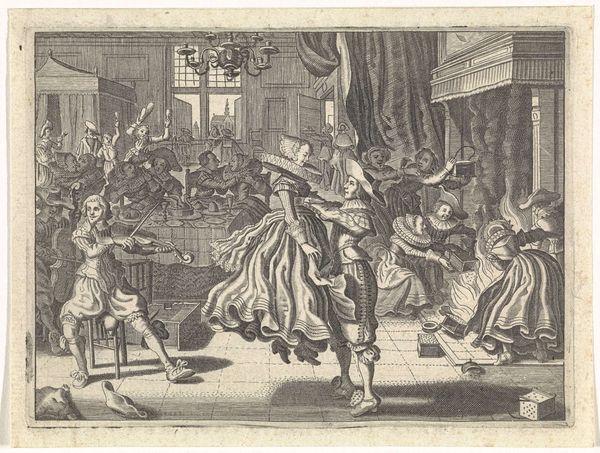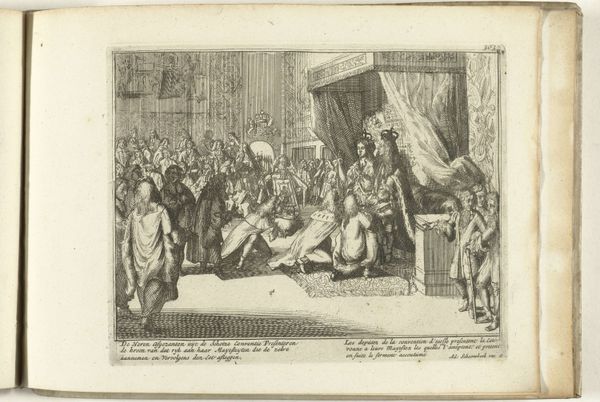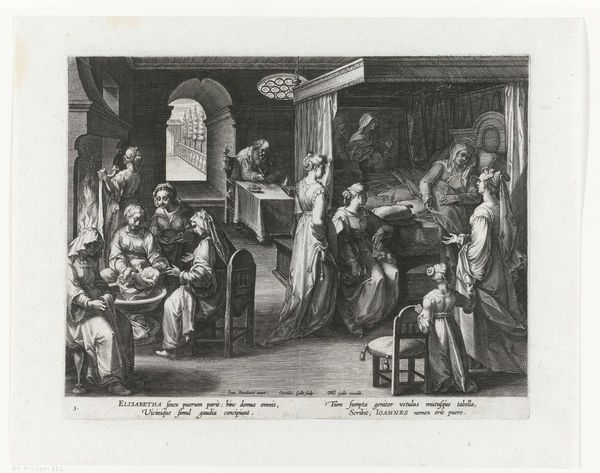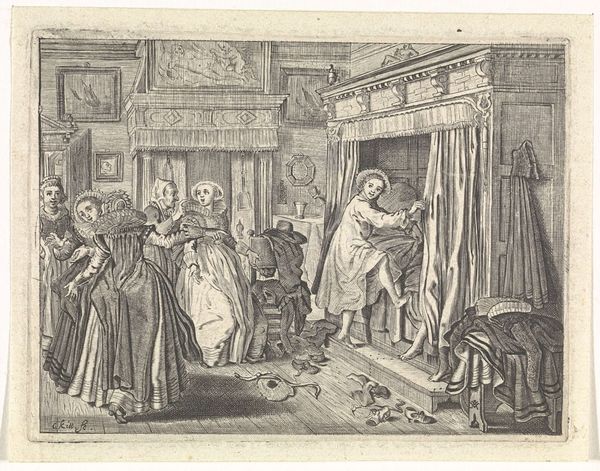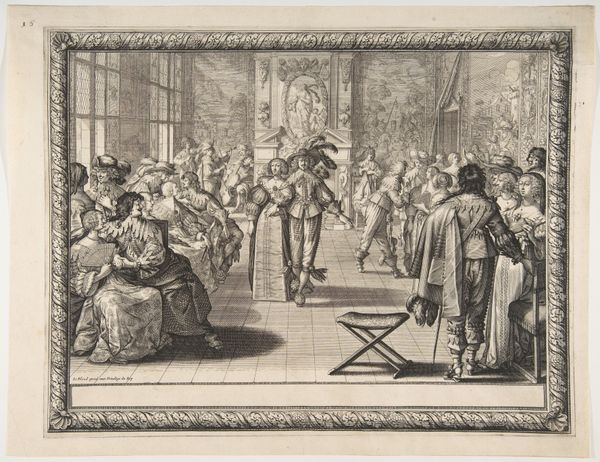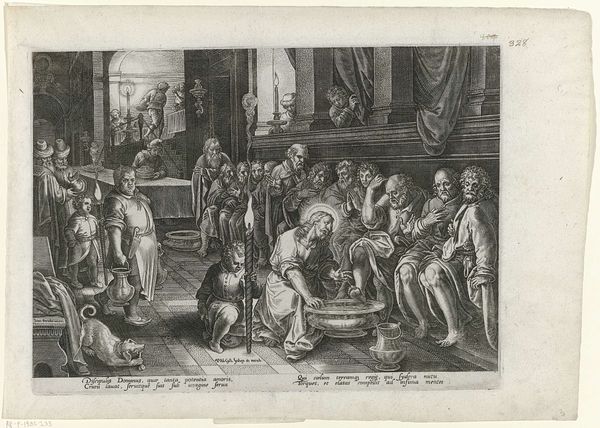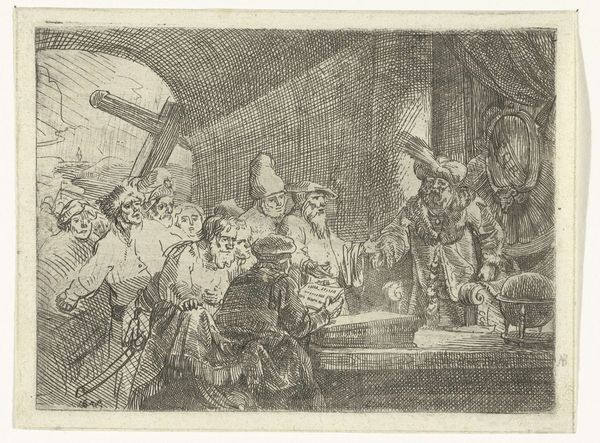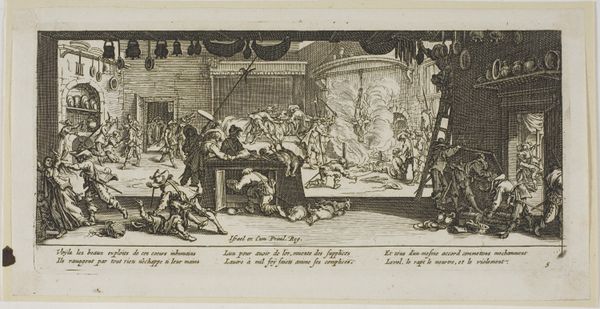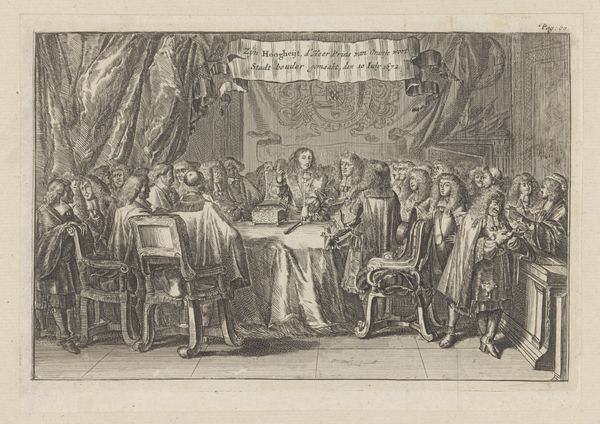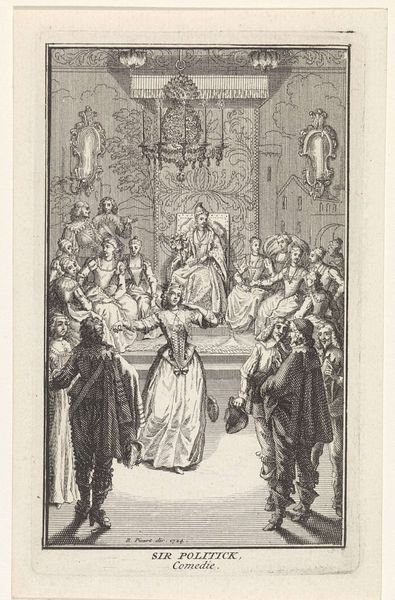
print, engraving
#
portrait
#
baroque
# print
#
figuration
#
line
#
genre-painting
#
history-painting
#
engraving
Dimensions: height 84 mm, width 113 mm
Copyright: Rijks Museum: Open Domain
Curator: This is Adriaen Matham's "Interieur met een huwelijksbanket," or "Interior with a Wedding Banquet," dating from 1620 to 1660. It's an engraving, a print, here at the Rijksmuseum. Editor: My first thought is the sheer density of line work. The cross-hatching creates depth, and really emphasizes the textures of those ruffs. It’s almost dizzying to look at! Curator: Exactly. The engraving medium allows for such fine detail. Think of the social context: engravings like this would have circulated widely, shaping perceptions of wealth and status during the Dutch Golden Age. The details mattered, didn’t they? To convey affluence but also specific messages about the family and their connections. Editor: Absolutely, and you can see how every element speaks to craftsmanship, even if it’s only replicated via the print: the rendering of fabrics, the way metalwork is depicted, all points back to skilled labour and production—how would access to the material culture have signalled social standing back then, I wonder? The band playing in the background even adds to the experience, setting the scene like in the theatre. Curator: That brings up an interesting point. Matham wasn’t just representing a scene, but constructing one with historical painting elements and all the genre details! You see history, manners, and of course class relations carefully curated in this image. What about the choice of engraving itself—why choose this mode? What kind of social status would that provide the artist and family in the artwork? Editor: Perhaps the accessibility of engraving aligned with Dutch values, compared to a unique oil painting. It puts skilled artisanal output into broader circulation. Though this work certainly documents an elite scene. Curator: True, the very nature of printmaking allows wider accessibility, shaping taste and aspiration throughout society, though I do think that status and access remained highly differentiated regardless. The question here would then be how this imagery was interpreted. Editor: Well, it leaves me contemplating the many hands involved in both its creation and circulation and consumption— from the engraver himself to the patron and end users. Curator: Indeed. A lens through which we can explore a moment in history and class dynamics, art, production and society… quite the intricate banquet!
Comments
No comments
Be the first to comment and join the conversation on the ultimate creative platform.
